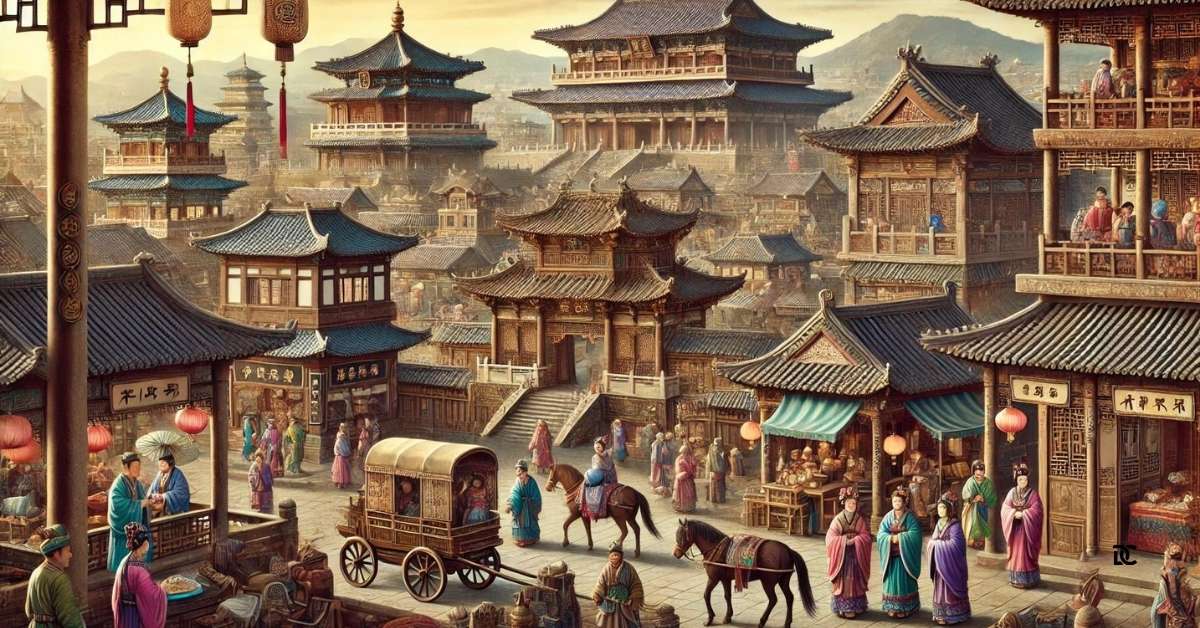The Tang Dynasty 618 907 Bc

Ever feel like diving headfirst into a story brimming with glittering cities, daring adventurers, and groundbreaking inventions? Well, buckle up, because we're about to take a trip back in time to the Tang Dynasty (618-907 CE), a period in Chinese history that was anything but dull! Think of it as China's dazzling golden age, a time when creativity, culture, and commerce truly exploded. It's like the Renaissance and the Industrial Revolution rolled into one, but with a distinctly Eastern flair. Understanding this era isn't just about memorizing dates; it’s about unlocking a treasure trove of ideas and achievements that shaped not only China but also influenced the world around it. It’s popular because it showcases a civilization at its absolute peak, a vibrant tapestry woven with silk, poetry, and innovation.
A Grand Opening: The Foundation of Greatness
The Tang Dynasty didn't just appear out of nowhere; it was built on solid ground. After a period of division and upheaval, the founding emperor, Li Yuan (later Emperor Gaozu), and his ambitious son, Li Shimin (Emperor Taizong), united China and established a new era of stability and prosperity. Emperor Taizong, in particular, is remembered as one of China's most brilliant rulers. He was known for his open-mindedness, his willingness to listen to his advisors (even when they criticized him!), and his dedication to good governance. This led to a period of peace and strong central authority, which is the perfect recipe for a golden age to blossom.
The Buzz of Chang'an: A Cosmopolitan Metropolis
Imagine a city so grand, so bustling, that people from all over the known world flocked there. That was Chang'an (modern-day Xi'an) during the Tang. It wasn't just the capital; it was a global hub, a melting pot of cultures. Merchants from Persia, India, and the Byzantine Empire rubbed shoulders with scholars, artists, and monks. The streets were wide and organized, lined with vibrant markets selling everything from spices and silks to exotic animals. This incredible diversity fueled creativity and exchange, leading to a flourishing of arts and ideas. It's a testament to how openness and interaction can lead to unparalleled cultural richness.

Poetry and Art: The Soul of the Dynasty
If there's one thing the Tang Dynasty is truly famous for, it's its poetry. The era produced some of China's most beloved and influential poets, like Li Bai (also known as Li Po) and Du Fu. Their verses captured the beauty of nature, the joys and sorrows of life, and the spirit of the age. Reading their poems is like getting a direct window into the hearts and minds of the people living back then. Beyond poetry, Tang art reached new heights. We see exquisite pottery, particularly the famous sancai (three-color) glazed earthenware, depicting lively figures and animals. Paintings became more sophisticated, and calligraphy reached new levels of artistry. This artistic explosion wasn't just for the elite; it permeated society, reflecting a deep appreciation for beauty and expression.
Innovation and Exploration: Pushing the Boundaries
The Tang wasn't just about pretty poems and art; it was also a time of incredible innovation and expansion. The invention of woodblock printing revolutionized the spread of knowledge, making books and information more accessible than ever before. This was a game-changer for education and literacy. Furthermore, the Tang expanded China’s influence and trade routes, particularly through the legendary Silk Road. This network of pathways facilitated the exchange of goods, ideas, and technologies between East and West, connecting diverse civilizations and enriching them all. Think of it as the ancient world’s internet, but with camel caravans!
Buddhism's Golden Age: A Spiritual Bloom
The Tang Dynasty also witnessed the golden age of Buddhism in China. Monks traveled to India to collect scriptures, and magnificent Buddhist temples and monasteries were built across the empire. Buddhism deeply influenced Chinese art, philosophy, and daily life, offering a spiritual anchor for many. While other religions also found a home in Chang'an, Buddhism’s impact was particularly profound, shaping the cultural and intellectual landscape in significant ways. The interactions between different faiths and philosophies during this time also led to a richer, more nuanced understanding of the world.

A Legacy That Endures
Although the Tang Dynasty eventually declined and fell, its impact on China and the world is undeniable. The administrative systems, the cultural achievements, the artistic styles, and the very spirit of openness and innovation established during this period continued to influence subsequent dynasties and are still celebrated today. So, next time you hear about the Tang Dynasty, remember it’s not just ancient history; it’s a vibrant chapter of human ingenuity and cultural brilliance that offers valuable lessons about the power of connection, creativity, and good governance. It’s a reminder that when civilizations embrace diversity and foster innovation, they can truly reach for the stars.
